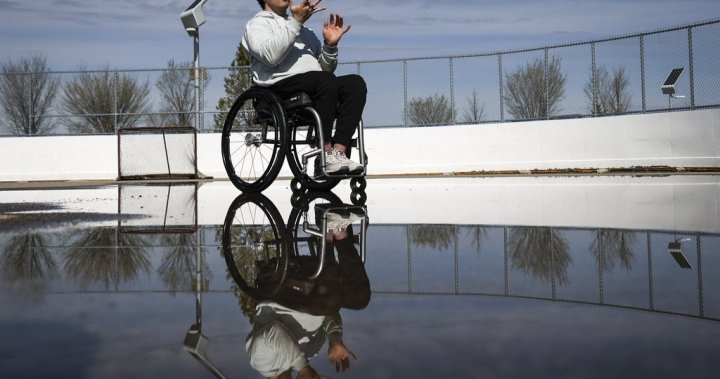In the quiet moments before dawn, Ryan Straschnitzki often finds himself reflecting on the journey that transformed him from a hockey player with NHL dreams to an unexpected symbol of resilience. Six years after the devastating Humboldt Broncos bus crash that claimed 16 lives and left 13 others injured, including Straschnitzki who was paralyzed from the chest down, his story of perseverance is now being shared with audiences across Canada through a powerful new docuseries.
“Beyond the Crash,” which premieres this week on CBC and CBC Gem, offers an intimate glimpse into the daily reality of rebuilding a life shattered by tragedy. The three-part series follows Straschnitzki through pivotal moments in his ongoing recovery, from grueling physical therapy sessions to his groundbreaking spinal stimulation treatment in Thailand.
“There were definitely moments when I questioned if I wanted cameras capturing everything,” Straschnitzki told reporters during a virtual press conference. “But ultimately, I realized this wasn’t just my story—it’s about showing people that even after unimaginable loss, there’s a path forward.”
The April 6, 2018 collision between the Humboldt Broncos team bus and a semi-trailer in rural Saskatchewan became a national tragedy that resonated far beyond the hockey community. The docuseries doesn’t shy away from the continuing challenges faced by survivors and families, exploring not only physical recovery but the complex emotional landscape of grief, survivor’s guilt, and finding purpose.
Director Sarah Thompson spent more than three years documenting Straschnitzki’s journey, capturing both milestones and setbacks. “What struck me most was Ryan’s honesty,” Thompson explained. “He allowed us to film during incredibly vulnerable moments, including days when the pain was overwhelming and progress seemed impossible.”
The series also examines the broader impact of the crash on Canadian sports safety regulations, highlighting policy changes regarding team transportation and emergency response protocols that emerged in its aftermath.
Perhaps most compelling are the scenes featuring Straschnitzki’s experimental spinal stimulation therapy, which has allowed him to regain limited movement below his injury site. Medical experts interviewed in the documentary discuss how his case is contributing to advancements in spinal cord injury treatment that could benefit countless patients.
“We’ve witnessed remarkable progress in neuromodulation techniques,” explains Dr. Vivian Chen, a neurosurgeon featured in the series. “Ryan’s willingness to undergo experimental procedures and document the results provides valuable data that’s helping reshape our understanding of spinal cord injuries.”
The docuseries also explores Straschnitzki’s involvement with the Humboldt Strong Community Foundation and his advocacy work for accessible sports programs. Since the accident, he has devoted significant energy to sledge hockey, with aspirations of eventually representing Canada at the Paralympic Games.
“Hockey was always going to be part of my life,” Straschnitzki reflects in one poignant scene. “I just had to find a different way to play.”
Early reviews praise the production for its unflinching honesty while avoiding exploitation of the tragedy. Critics note the delicate balance between acknowledging the immense loss while focusing on the resilience that has defined Straschnitzki’s recovery journey.
The series arrives at a time when conversations about mental health in sports have gained momentum, offering valuable insights into the psychological challenges athletes face following career-ending injuries and collective trauma.
As viewers prepare to witness this remarkable story of determination, one question lingers: how might our understanding of recovery and resilience evolve if we approached all trauma survivors with the same level of sustained attention and support that Straschnitzki has received in his ongoing journey?










